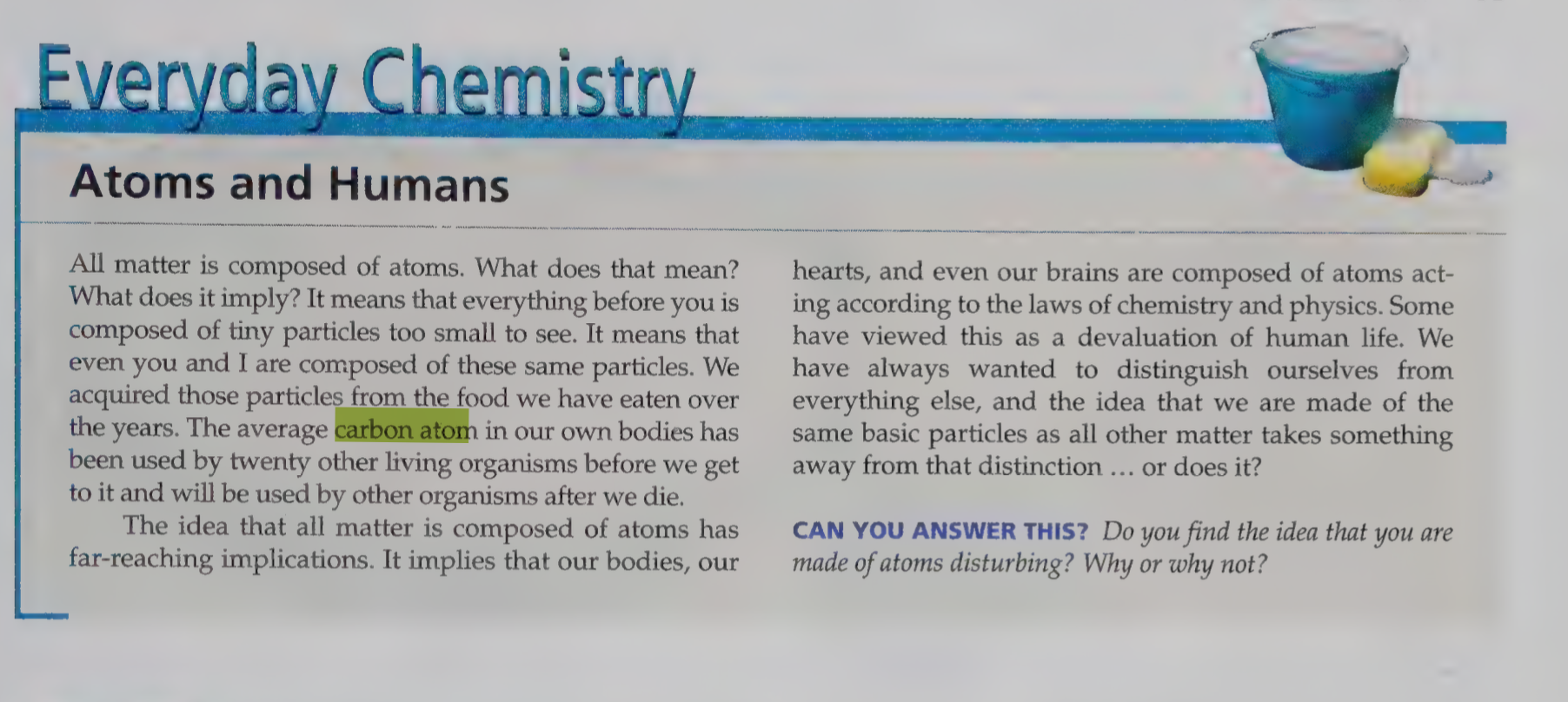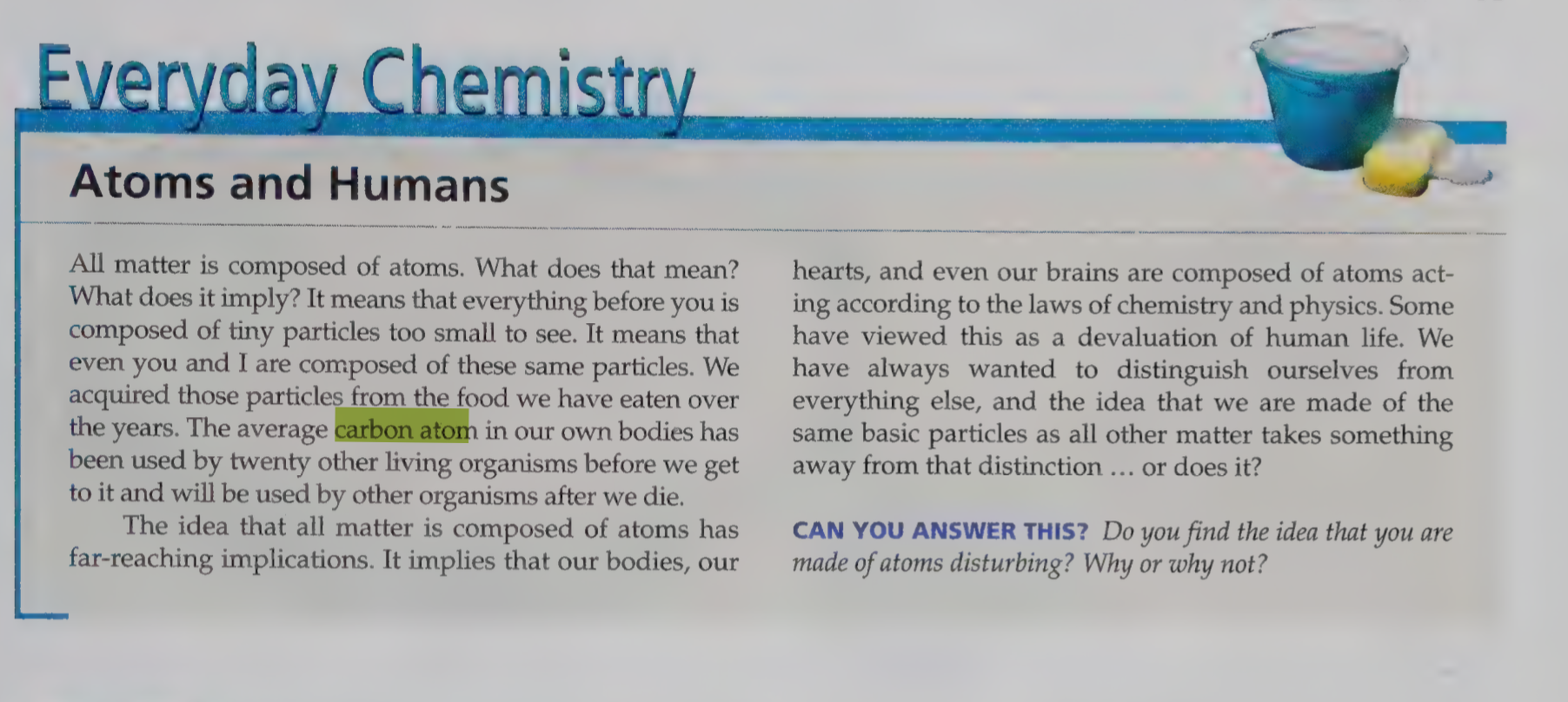What scientific fact blows your mind the most?
-
In a sense, everything can fly. Just sometimes not for very long.
-
You can observe the chirality of some molecules from the crystals they form, sometimes they twist clockwise, other times they twist counter clockwise. Which way they twist is dependent on their molecular structure.
-
If our universe is bound by the laws of mathematics (big IF), then any theorem discovered within it has to be consistent or incomplete w.r.t it.
If a theorem is discovered that upends math as we know it, then the repercussions could be cosmic.Again, big if about the universe being bound by the laws of maths
-
Stop fucking clapping then
-
The size of the universe and the distance between everything in it. It takes about 8 minutes for light from our own sun to reach us. And the observable universe is about 5,859,000,000,000,000,000 times larger than that! That is quite a trip. I would need about 293,283,000,000,000,000,000,000,000 charging stops with my electric car to get to the end. I think I’ll pass.
-
In chemistry I was taught one carbon atom can exist in at least 12 separate living bodies before it's no longer stable.
-

-
What does that mean?
-
After you die, the carbon atoms that made you might go on to make another living thing.
-
that doesn't make any sense. Carbon doesn't get less stable by being used in bodies.
Carbon 14 exists, but that decays regardless if it's in a body or not. At has quite a long half life
-
At least is a heavy lifting qualifier in this case.
-
Hon I think you maybe misunderstood your chem class.
Carbon is carbon is carbon and doesn't know or care if it's in a living body.
Carbon-14 has a half life of 5700 years. This means that through random decay, the approximate rate of decay is one half of a given amount every 5700 years, this of course breaks down when you reach the single-digit quantities of atoms.
Now, this has nothing to do with the stability of an atom of regular-ass carbon-12, your common garden variety carbon, which is extremely stable and would require outside influence to decay into another isotope.
-
I mean... You're not exactly wrong.
-
I remember reading a couple years ago that's not actually how plane wings work. The actual way is much more complicated and hard to explain and hard to teach, so they just teach it this way because its an intuitive mental model that is "close enough" and "seems right", and it really doesn't matter unless you're a plane wing designer.
-
The basic way an airplane works actually is simple and intuitive: it meets the air at an angle and deflects it downward. The equal and opposite reaction to accelerating that mass of air is an upward force on the wing.
There is, of course a whole lot of finesse on top of that with differences in wing design having huge impacts on the performance and handling of aircraft due to various aerodynamic phenomena which are anything but simple or intuitive. A thin, flat wing will fly though, and balsa wood toy airplanes usually use exactly that.
https://en.wikipedia.org/wiki/Lift_(force)#Simplified_physical_explanations_of_lift_on_an_airfoil
-
Ahhh I misremembered. It was this "The average carbon atom in our bodies has been used by twenty other organisms before we get to it and will be used by other organisms after we die."

It's been six years since that class.
-
Yea, I misremembered it. It was in my book from a while back. Here we go:

-
Except bees. Engineers reckon they shouldn’t be able to fly, but bees told them to get fucked and do it anyway
-
What I find mind blowing about the scale of the universe, is that on a logarithmic scale from the smallest possible thing to the largest possible thing, humans live at almost the exact centre.
-
the implication of einsteins mass-energy equivalence formula is mind-blowing to me. one gram of mass, if perfectly converted to energy, makes 25 GWh. that means half the powerplants in my country could be replaced with this theoretical "mass converter" going through a gram of fuel an hour. that's under 10 kilograms of fuel a year.
a coal plant goes through tons of fuel a day.
energy researchers, get on it


